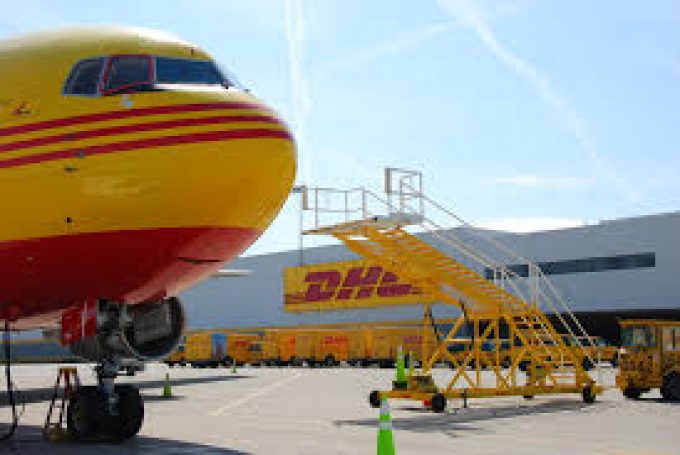US mega-airlines grow cargo volumes, but miss out on ecommerce boom
The three US mega-airlines – Delta, United and American – expanded their cargo traffic in ...
TFII: SOLID AS USUALMAERSK: WEAKENINGF: FALLING OFF A CLIFFAAPL: 'BOTTLENECK IN MAINLAND CHINA'AAPL: CHINA TRENDSDHL: GROWTH CAPEXR: ANOTHER SOLID DELIVERYMFT: HERE COMES THE FALLDSV: LOOK AT SCHENKER PERFORMANCEUPS: A WAVE OF DOWNGRADES DSV: BARGAIN BINKNX: EARNINGS OUTODFL: RISING AND FALLING AND THEN RISING
TFII: SOLID AS USUALMAERSK: WEAKENINGF: FALLING OFF A CLIFFAAPL: 'BOTTLENECK IN MAINLAND CHINA'AAPL: CHINA TRENDSDHL: GROWTH CAPEXR: ANOTHER SOLID DELIVERYMFT: HERE COMES THE FALLDSV: LOOK AT SCHENKER PERFORMANCEUPS: A WAVE OF DOWNGRADES DSV: BARGAIN BINKNX: EARNINGS OUTODFL: RISING AND FALLING AND THEN RISING

Air freight proved the star performer for Deutsche Post-DHL (DP-DHL) in 2018 as its Express and Global Freight Forwarding divisions posted healthy returns.
However, a 56% decline in its Post, E-commerce, and Parcel (Pep) business depleted the profits of other divisions to leave the operator 15.5% down on last year.
Chief executive Frank Appel told investors 2018 had been a “challenging” year, but added that the final months had allowed the company to close the year on a high.
“Despite rising geopolitical uncertainties, global trade continued to register growth and this benefited our DHL divisions in particular,” said Mr Appel.
“In our German post and parcel business, we initiated measures to secure long-term ebit growth – and we consciously accept that this comes with a short-term burden on ebit.
“We have thus created the conditions for reaching our 2020 targets and for continuing to grow profitably in the years thereafter.”
Among the measures Mr Appel referred to was the decision, announced in January, to divide the post and parcel and e-commerce businesses into two separate entities, a move which underscored a growing sense in the sector that the post and parcel segment is no longer the profit generator it once was.
The company noted that, while revenue for the post business unit dropped below the prior-year figure of €10bn, to €9.7bn, this was to be expected.
“The decrease was the result of structural volume declines in mail communication and dialogue marketing. However, the volume declines remained within the range of the long-term projections. In 2017, revenue and volumes had been positively impacted by elections in Germany.”
Overall, the group reported €61.5bn in revenue, up some 1.8% on 2017, but profit (ebit) plummeted 15.5% to €3.2bn, despite the 12.8% increase in profitability in its DHL businesses.
Of those, its global forwarding division witnessed the greatest return on investment, with profitability up 48.8% (€442m) on a 3.4% upturn in revenue (€15bn).
Air freight volumes dropped 3.9% to 3.9m tonnes, due, said DGF, to “structural adjustments in the customer portfolio”. But revenue rose 6.9% to €4.9bn, while gross profit was up 9.2%. The fourth quarter was strong, with revenue up 10.4% and gross profit up 14.5% despite a volume decline of 3.6%.
In ocean, volumes were down 1% year on year, while revenue remained flat at €3.5bn, although gross profit improved slightly, up 0.9%.
“DHL Forwarding maintained a selective stance during peak season, driving very good gross profit development despite below-market volume growth,” said a company spokesperson. “Going forward, we aim to grow volumes at the right price, so as to bring volume growth closer to market, whilst maintaining yield discipline.”
Financial columnist for The Loadstar Premium, Alessandro Pasetti, wrote: “It took Tim Scharwath less than two years to turn it around. It has an outstanding performance in a 3PL market where many of its rivals are either sputtering or still trying to understand what is happening in their competitive environment.”
The Express division has well and truly secured itself as the second biggest, behind Pep, thanks in part to the business brought in by Amazon. Now representing just over 26% of total business, up 1.3% on last year, Express recorded a 7.3% increase in revenue (€16.1bn) leading to a 12.7% upturn in profits (€1.9bn).
“Particularly encouraging was the fact that the division again registered growth across all regions,” said the company. “This dynamic performance was again driven by strong growth in the international time-definite delivery business, where daily volumes rose by 7.4%.”
But when pressed on Amazon’s own logistics ambitions, Mr Appel hesitated to suggest that the company’s largest customer could become a key competitor.
“When it comes to others trying to get into this business, we will be looking to see if they can do it as well as we can,” he said. “What is nice to see, exciting, is that customers are clearly accepting our offerings and the changes we have made.”
Perhaps somewhat falling under the radar though was the Supply Chain division, the only one to record declines in revenue (-5.7%) and profit (-6.3%).
You can see the results here.
Comment on this article